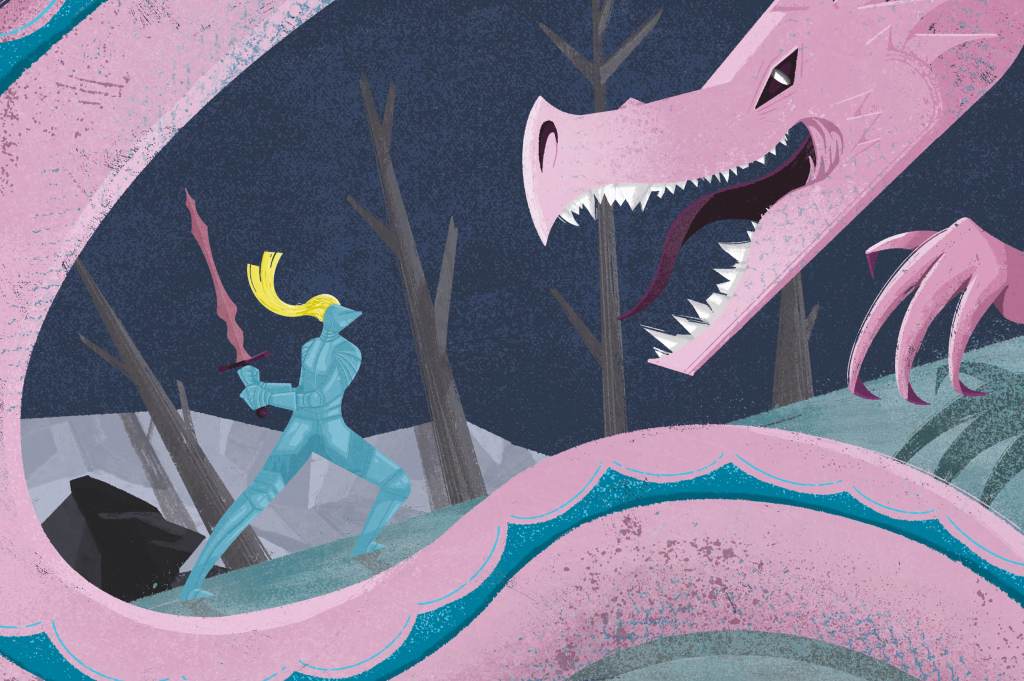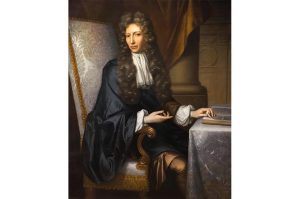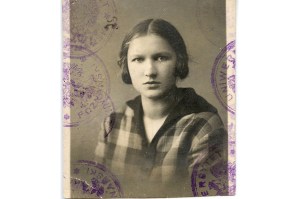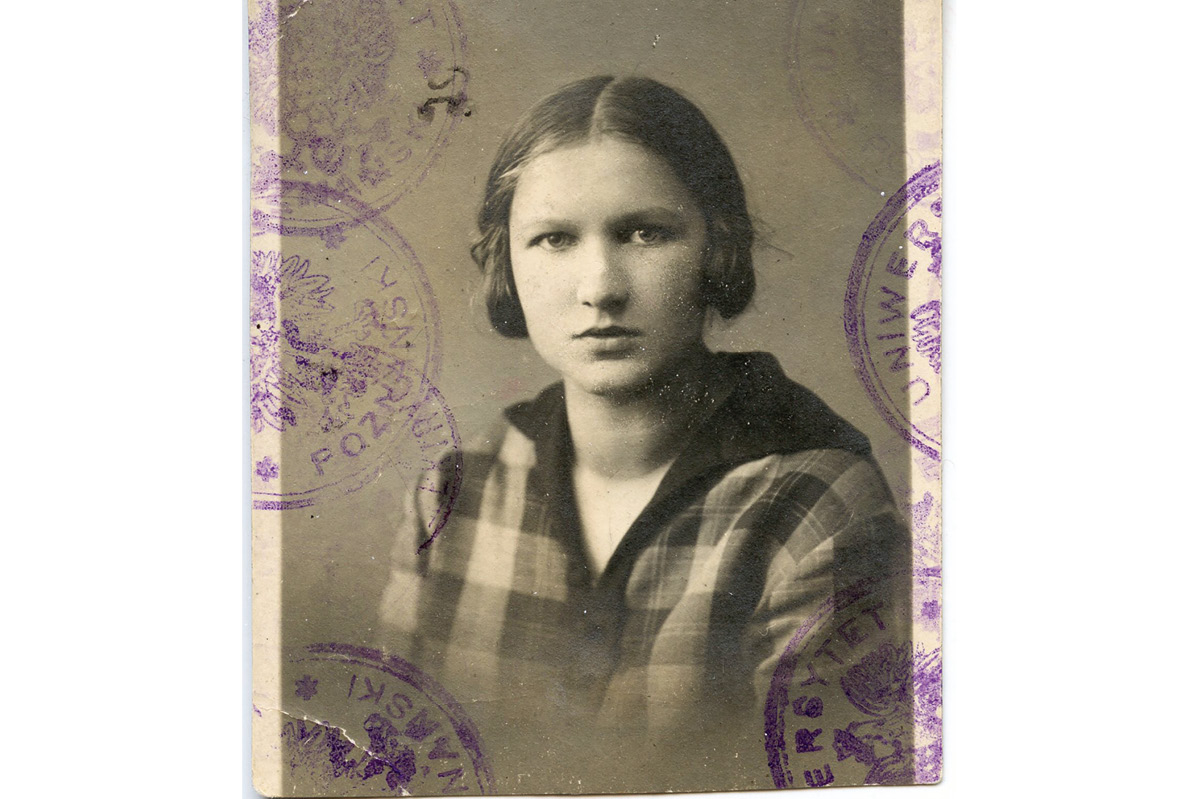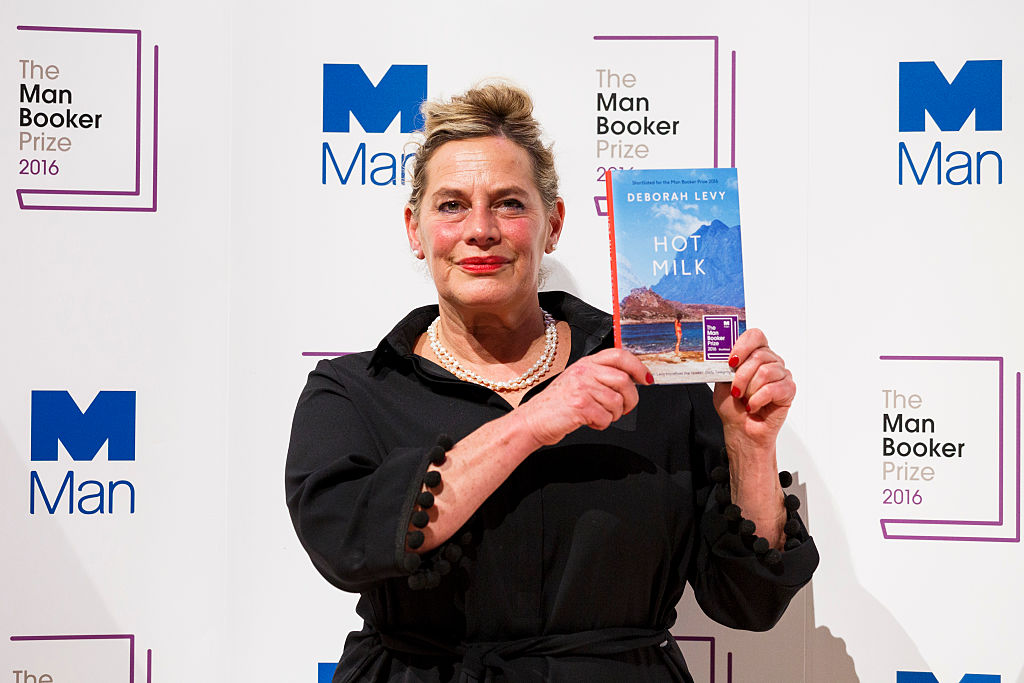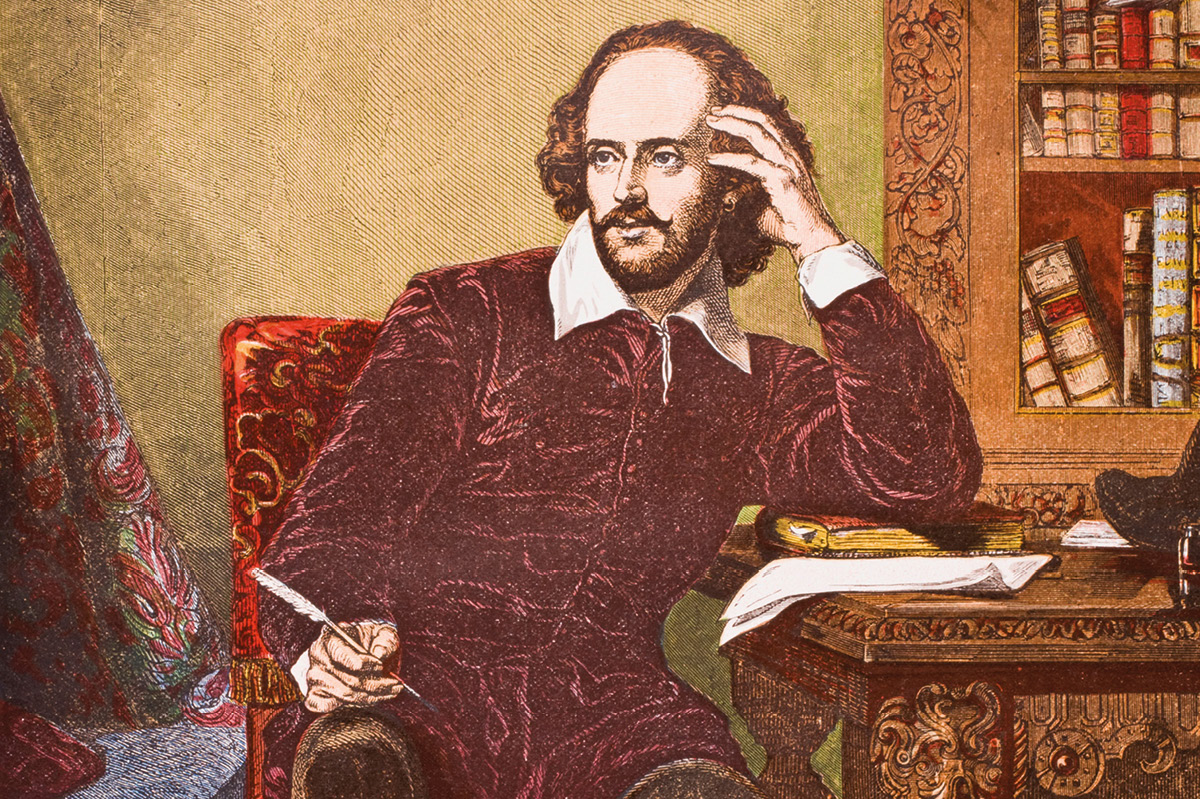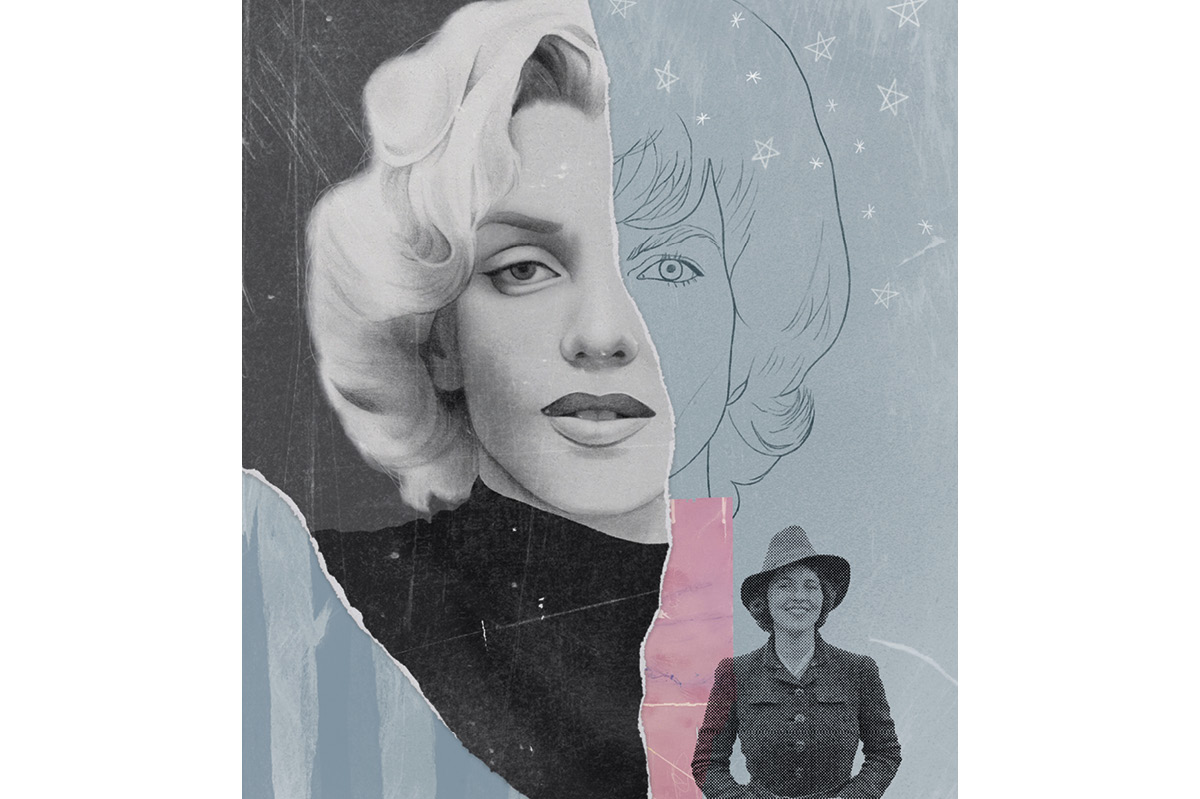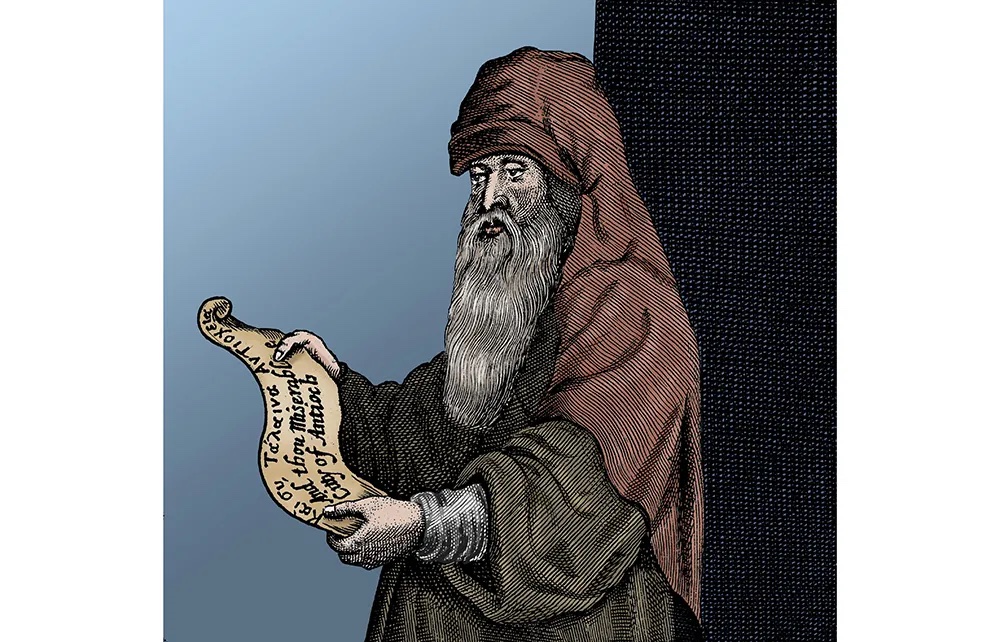Emily Carroll’s new graphic novel, A Guest in the House, is an involving, beautifully plotted study of the madness of isolation, steeped in the tropes of fairy tale and horror. And, as all good fairy tales do, it confidently deals in the imagery of the unconscious. Narrated via an innovative combination of text and cinematic, sweeping illustration, it concerns the boundaries of the imagination, and the dynamics of a small family as it threatens to fall apart.
Abby is a young wife, listless and bored, who has married an older man (David, a normal kind of guy, with that most humdrum of jobs: dentistry). The setting, depicted with haunting precision in muted tones, is 1990s Canada. Carroll evokes Abby’s quiet desperation, as when she explains what she likes about marriage: “Pouring coffee in the morning for my husband… I like putting away dishes from the dishwasher into just the right spots. Into the places I’ve picked, no one else. The shelves and nooks in this house seem overwhelming in the best possible way.” Abby works at the Valu-Save, “knowing I don’t have to. I know it’s the 90s and all and I should want some independence, maybe a career of my own, but David makes a good living… Keeps me busy, too.” Abby wants to fight against the role of the housewife, but she doesn’t quite know how to.
On one spread, the Valu-Save, stable and ordinary, is immediately above the house and the lake, which are full of dark shadows. You just know that something’s going to go into (or come out of) those waters. A forest menaces on the opposite shore. These three places show Abby pinioned between the drudgery of her McJob, the lonely house with its mysterious attic and the wildness of the landscape (she dreams of forests, and in fairytales, forests mean mystery). Abby contains huge, conflicting depths.
There are other triangles in Abby’s life. Her husband — whose irritable nature is wonderfully compressed into a few bold lines when he puts on a tie — has a daughter, Crystal, from an earlier marriage. Crystal doesn’t help to throw light on the situation, however, and her relationship with Abby is difficult. Carroll makes her a classic “creepy child,” with big eyes, and an ability to see things that most adults can’t. There is also David’s ex-wife, who makes her presence very known, even though she’s dead. Did she kill herself? And what happened to all her paintings?
Minor characters are expertly drawn, with little touches bringing out their personalities: the rich, annoying neighbor, Beth Wilson, who hangs around a little bit too much, and represents a type of Successful Female; a glossy hairdresser, who’s expecting a baby, who is also a type that Abby can never be. These real-life scenes, in which Abby gradually uncovers what happened to the ex-wife, build up with sinister, controlled tension. Throughout, Carroll experiments with the positioning of words and pictures: one page, split into nine panels, shows both what Abby is saying and, in black rectangles, what she’s thinking. The effect is striking. Ordinary objects, such as a chime that hangs on the wall, are rendered menacing. Shadows, photographs, the crease of a duvet cover: all contribute to a sense of unease.
The colorlessness of the real world is contrasted with Abby’s bold dreams, in which she is a knight in shining armor, slaying dragons and finding jewels. The opening spread shows Abby’s dream in technicolor: “I used to dream of dragons. I would find them, snug inside damp caverns. panting pacing When I sliced through them they would release their riches in a stinking swell of gore and glittering jewels… and I, beneath… would find stillness in the hot viscera.” You don’t have to be a psychologist to decode Abby: she puts herself in armor, as she has had to create a carapace in her humdrum daily life. As for the “panting” and the “damp caverns”; well, I’m sure I don’t need to spell it out, but let’s just say that Abby is a little bi-curious.
The imaginative and the real collide. Crystal starts to draw pictures of her mother who “lives in the water” and says that she’s “going to live with her someday” — David has an irrational fear of Crystal being in the lake, and Abby develops a theory about the ex-wife, who visits her in dreams. It leads to a terrifying climax which makes us reconsider what has gone before.
This is also a literary work, partly a homage to Daphne du Maurier’s Rebecca, but there are also hints of Angela Carter’s re-imaginings of fairy tales, especially “The Bloody Chamber,” her version of Bluebeard’s castle. Meanwhile, David is reading a William Gibson science fiction novel, Count Zero. With A Guest in the House, Carroll has created a fabulous hybrid: a domestic drama welded onto a Gothic novel. It plays on our deepest fears. And boy, will it make you shiver.
This article was originally published in The Spectator’s October 2023 World edition.



